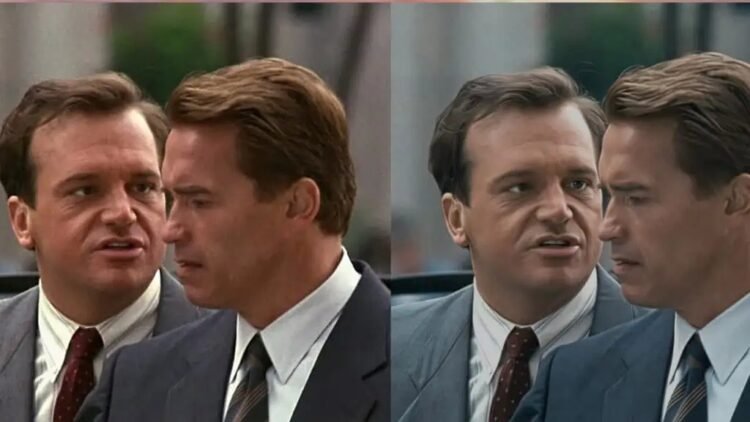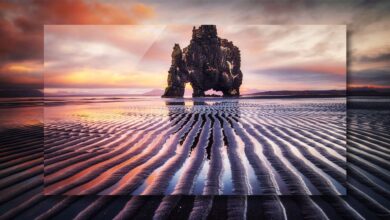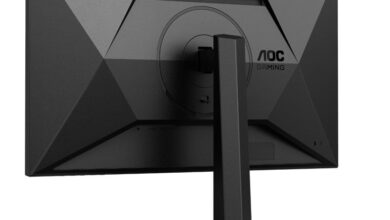James Cameron and the controversial remastering of 4 of his most relevant films

Continue and increase controversy with the remastering of Titanic, Risky Lies, The Abbys and Aliens in digital 4K format. For one reason or another, James Cameron is in the news and everything he does or doesn't do becomes a media whirlwind. This time for two main events.
First of all, on December 11 The 4K Blu-Ray of Titanic (1997) went on sale worldwide, a real event for the film-loving community. The first reviews They did not wait, mentioning a surprisingly spectacular and unexpected definition. That was the trigger.
And secondly, a few days ago, the launch streaming of true lies (1994, Risky Lies) in 4K version was the definitive explosion: the praise and Little by little, criticism of the image gained strength. The first screenshots were not hard to come by and confirm that the result is as irregular as it is suspicious.

We already did an explanatory report on the differences between remastering and restoration last week on AVPasión. If you missed it, it is a very interesting and complementary reading to what you are reading.
The two antecedents
So far the most objective news with the description of the main facts. Now it's time to rewind in time and look for the origin of all this and its protagonists. For that, the first thing we have to do is temporarily forget about James Cameron and focus on Peter Jackson. The Oscar-winning and multi-award-winning New Zealand director of the iconic trilogies of The Lord of the rings and The Hobbit. He is the founder of Park Road Post Production. Located in Wellington, New Zealand, Park Road is one of the most important image and sound post-production centers on the planet.
That is the starting point of this controversial trip, because Peter Jackson released a documentary called 'They Shall Not Grow Old' in 2018. (They Shall Not Grow Old, distributed by Warner Bros.). A documentary based on historical and original images of the First World War kept in the archives of the British Imperial War Museum.
Images that leave one stunned by their remastering and restoration in color and that raise the big question: how is it possible that primitive strips of celluloid filmed between 1914 and 1948 have no trace of grain, hair, scratches, mold, vignetting, etc.? Ladies and gentlemen, because Park Road had created the first generation of its own AI-based software for video remastering and restoration.. Judge for yourselves:
The secret is already told: artificial intelligence. The images shot at the beginning of the 20th century were in very poor condition, so first they had to clean the original negative slightly so as not to put it at risk and then they digitized it and They used the 'magic' of AI for their digital restoration.
Well, three years later, in 2021, Peter Jackson releases another documentary called 'The Beatles: Get Back'. This one did have more media impact. It condenses 60 hours of footage recorded on 16mm celluloid in 1969 into a six-hour documentary series. This is the second version of the event, since the author of these recordings already made the documentary at the time. Her name was Michael Lindsay-Hogg and he was a filmmaker who had collaborated on other occasions with the legendary British music group. After accumulating so many hours of recording, he ended up releasing the documentary 'Let it Be', an 80-minute film that went quite unnoticed at the time.
Until then, everything was more or less normal: same material, already used film reels, remastering… but if this docu was known for something in the audiovisual community, it was because of the plastic appearance and without nuances of those images. Again, seeing a video with more than acceptable definition with hardly a trace of the typical defects of celluloid is surprising.
Three years after the creation of the Park Road AI, we have this 2nd generation at the service of Peter Jackson. And it is necessary to qualify. When I saw the documentary, the first thing I I thought the images had been recorded on videomaybe in U-matic! (to the most veterans of AVPasión, it may sound familiar). The texture or rather, the absence of it, made me associate them with the beginnings of the video instead of celluloid.
Auras around the heads, colors without nuances, absence of gradients. This 2nd gen AI had the worst of a digital noise reduction (DNR) and a little of the best of digital video.

Park Road AI Third Generation: James Cameron's Remastered
«We have devised a technology called demixing. You teach the computer what a guitar sounds like, you teach it what a human voice sounds like, you teach it what a drum sounds like, you teach it what a bass sounds like. By feeding the system with enough sound data, the artificial intelligence eventually learned to distinguish not only the sounds of the instruments, but also the voices of the Beatles. And then we can take a mono track of them at Twickenham performing and we can say, 'Just give us the vocal track.' And the artificial intelligence will make a vocal track only. So, you'll see Ringo in the background playing the drums, but you won't hear the drums. Not a bit of drum noise, just clean vocals”.
What you have just read are some statements by Peter Jackson in 2021 (Source: Elconfidencial.com, 12/12/2021 by Omar Kardoudi). They are relative to sound, but totally extrapolated to video. Teach the AI to identify faces and after a lot of training, including images with faces of all types and in any circumstance, the machine will identify them by itself in Titanic and in Risky lies.
We reach 2023 and Park Road, with its third generation of AI, convinces James Cameron to make four of his most notable 90s movies go through your software for a 4K remaster and restoration too. The origin of the four films is the same Super 35 mm, but the state of conservation of those same negatives, the photochemical strips with the added optical effects, interposivites, etc. can lead to restorations with different results even though the AI is the same.

For this reason and because AI is in its infancy (although its results are already impressive), The pores disappear from the skin of Kate Winslet or Arnold Arnold Schwarzenegger and the flesh, more than skin, looks like it has a wax cream on it. But not always, only sometimes, or it depends on the depth of field of the optics, or if that negative from 30 years ago has any visual effect, or if it does not detect all faces in the plane as faces, and a long etcetera.
Soon at AVPasión we will publish the review from the 4K Blu-Ray disc Titanic and we will give even more development to this controversy, but the main question and answer have already been discovered. The question: if the camera negative Oppenheimershot in 70mm and IMAX, is between 6 and 13 times larger than Titanic's 35mm 2-perf, How is it possible that they look, let's say, similar in resolution? And his answer: thanks to artificial intelligence.
And the usual doubts: a super production from 1997 should not look like this 'good but strange' and although The Abbys and Aliens They have that similar 'look', they seem to contain less AI than 'True Lies' in 4K from iTunes. Yes, okay, approved and supervised by the director, but was it necessary to reinterpret its aesthetics? And one more, as the renowned and respected film restorer, Robert A. Harris, states: in what percentage is what this digital processing worsens superior to, equal to, or inferior to all the good things and improvements it adds with respect to Blu-Ray?
The rest of the possible variables, especially the HEVC or H265 compression of the streaming complicate this equation and when the 4K Blu-Ray disc of 'Risky Lies' comes out around March 2024 We will be able to confirm 100% what remains of all thissince it is the best audiovisual format for mass consumption available to date.
To finish I leave you this link from X, the old Twitter. They are two delicious minutes that correspond to a fragment of the audio commentary from the 'Aliens' DVD where James Cameron talks about the 'stock' of Kodak emulsions, spherical and anamorphic optics and their relationship with grain. He clearly states that he would have liked 'Aliens' (and I would say by extension the rest of his photochemical films) to have much less grain. And from there, from then on, it is the story that we have analyzed in this report.
James Cameron discusses the aspect ratio and grain of Aliens (DVD commentary) pic.twitter.com/Ec6Q8iL3qa
— Alien Theory (@Alien_Theory) December 16, 2023
Quick Q&A
- Are these remasters supervised by the director? Yeah.
- Were all four films photochemical on Super 35mm? Yes, but with different optics and different Kodak emulsions.
- Has the restoration changed the aesthetics of the four films? Yes, to a greater or lesser percentage.
- Has the image improved or worsened? This is the most difficult to answer, because there is probably a little bit of everything and judging by the comments, the worst stop is 'Risky Lies'.
- With all of the above, is it the best version published to date for the fan? Yeah.





